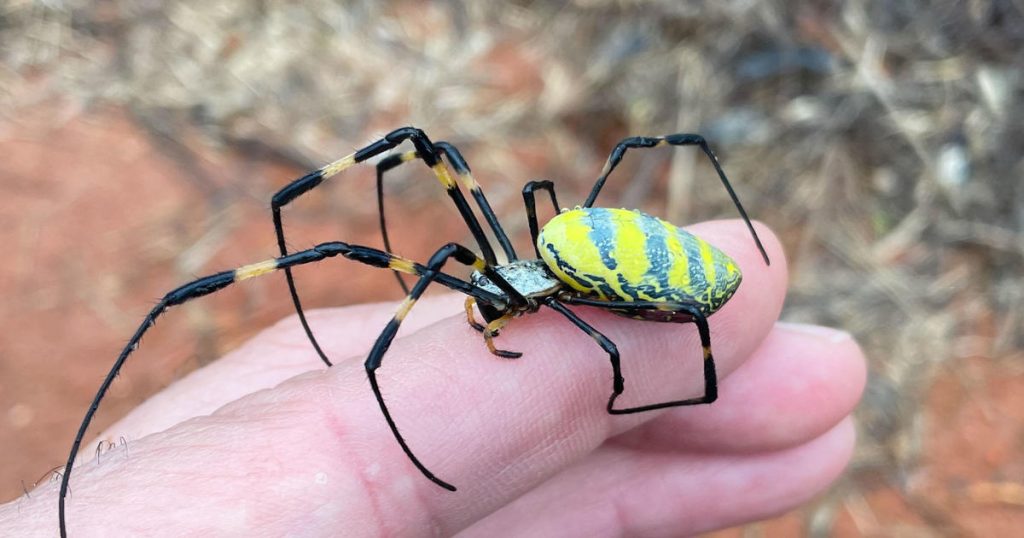The U.S. East Coast is bracing for an invasion of Joro spiders, large venomous spiders with 4-inch-long legs that have the ability to parachute through the air. The spiders were first spotted in north Georgia around 2010 and have since been spreading across the eastern U.S. They are known for their vibrant yellow and grey bodies and their unique ability to fly using a technique called ballooning, where they release silk threads into the air and are carried by the wind. While they are venomous, they do not pose a danger to humans as their venom is primarily used to catch prey such as butterflies, wasps, and cockroaches.
According to a peer-reviewed study published by invasive species expert David Coyle, Joro spiders are “here to stay” in the U.S. The study found that their native range in Asia matches up well with most of North America, making it likely that they will be able to inhabit much of the eastern U.S. People have reported seeing Joro spiders in various states, including Florida, Alabama, Mississippi, the Carolinas, Tennessee, Kentucky, Virginia, West Virginia, Maryland, and Ohio. New York and New Jersey are next in line for the spider invasion, with researchers predicting that the spiders could pop up across the states this summer. One researcher noted that Joro spiders have been seen in urban areas, such as on street lamps and telephone poles, where other spiders would not typically be found.
Despite their venomous nature, Joro spiders do not pose a threat to humans or pets. The venom is used primarily to catch prey in their webs, and there is no evidence of them causing harm to humans or animals. However, they could potentially pose a threat to native spider populations by competing for resources and habitat. Researchers and experts are monitoring the spread of Joro spiders and working to better understand their behavior and potential impact on local ecosystems. While the spiders may be unsettling to some, they are a part of the natural world and play a role in the ecosystem as predators of other insects and arachnids.
Jose R. Ramirez-Garofalo, an ecologist at Rutgers University, noted that it is only a matter of time before Joro spiders arrive in New York and New Jersey, given their rapid spread across the eastern U.S. Researchers and pest control experts are advising residents to be aware of the potential arrival of these spiders and to take precautions if they encounter them. It is important to remember that Joro spiders are a part of the natural world and, while potentially intimidating due to their size and flying ability, they do not pose a significant threat to humans. Monitoring and research efforts will continue to track the spread and behavior of these spiders to better understand their impact on local ecosystems and communities.


